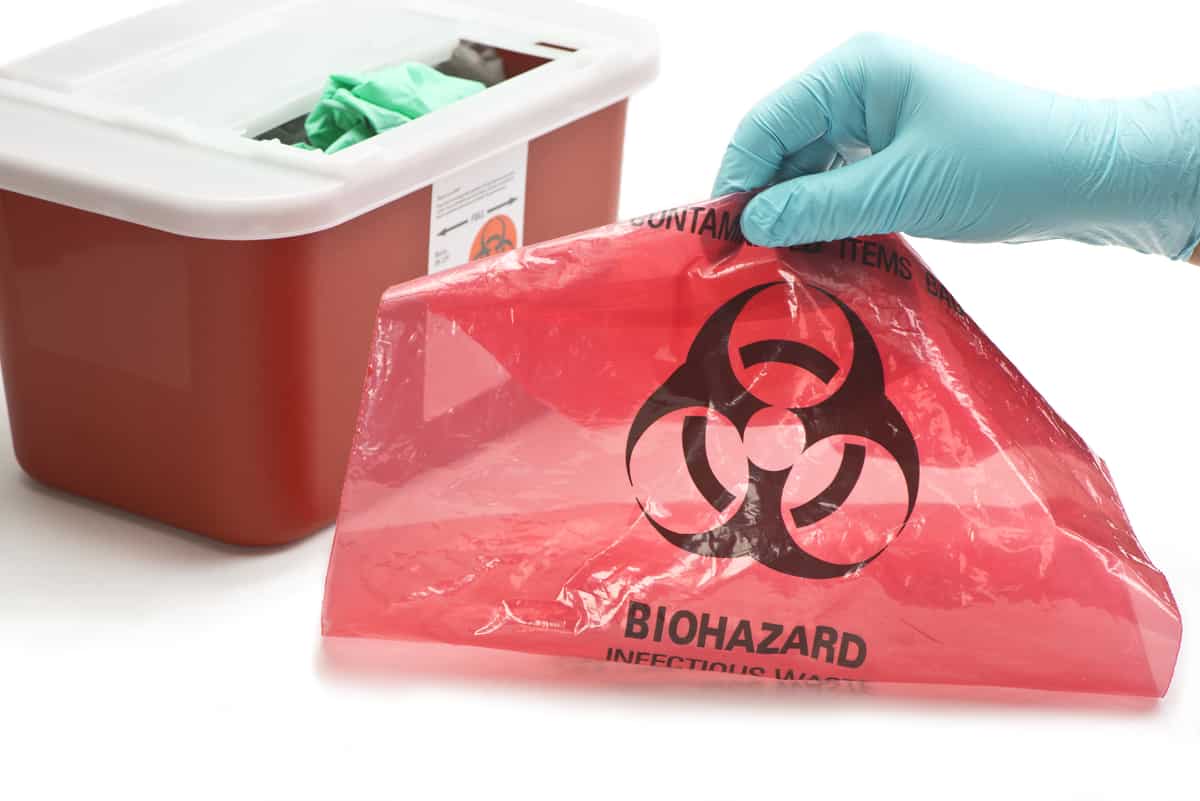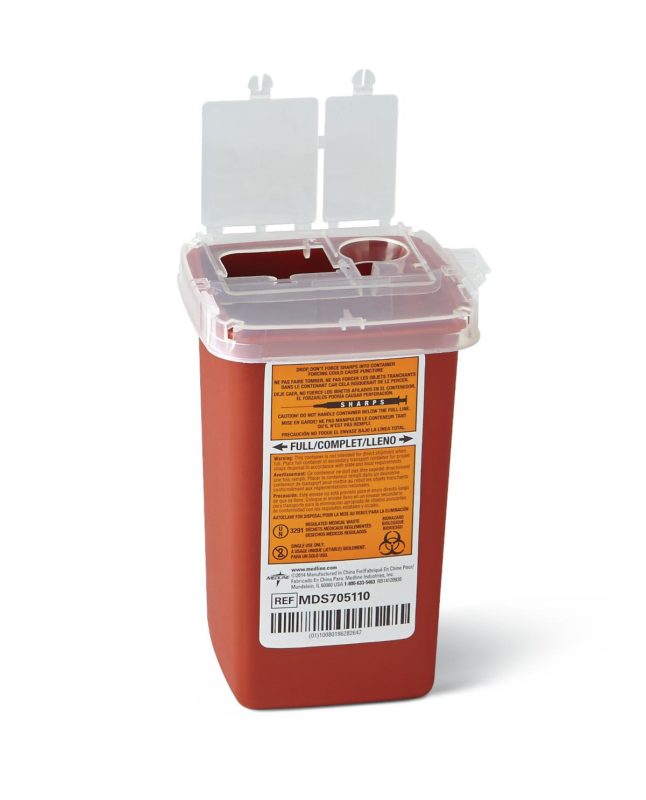Medical Waste Removal Quality: Elevating Security Specifications in Your Center
Medical Waste Removal Quality: Elevating Security Specifications in Your Center
Blog Article
Reliable and Eco-friendly Medical Waste Disposal Solutions
In the ever-evolving field of medical care, the concern of clinical garbage disposal continues to be a subject of critical significance. As hospitals, centers, and other healthcare facilities make every effort to supply high quality client care, they have to additionally deal with the challenge of successfully and responsibly disposing of their waste - medical waste removal. In a period where environmental sustainability goes to the center of public awareness, discovering solutions that are both environmentally pleasant and efficient is not just a matter of compliance but likewise a testament to the commitment of medical care organizations towards a greener future. From waste segregation methods to innovative reusing initiatives, this discussion will explore the different strategies utilized to tackle this pressing problem, leaving you fascinated and excited to explore the potential services that lie in advance.
Waste Partition Practices
Reliable waste segregation practices are necessary to ensure the proper and safe disposal of clinical waste. Medical waste, that includes materials polluted with possibly transmittable materials, must be managed in a manner that lessens the danger of injury to both public wellness and the setting. Proper waste segregation plays a vital duty in attaining this objective.
Waste partition entails the separation of different kinds of waste based upon their characteristics and potential risks. This process guarantees that each type of waste is treated and dealt with properly (medical waste disposal services with WasteX). It starts at the point of generation, where health care facilities should have assigned containers and containers for different waste groups, such as sharps, contagious waste, pharmaceutical waste, and non-hazardous waste
By segregating clinical waste at the source, doctor can stop cross-contamination and reduce the risk of direct exposure to infectious representatives. This practice additionally helps with the recycling and healing of certain products. As an example, setting apart and reusing clean plastics and glass minimizes the need for basic materials and decreases the environmental effect of clinical waste disposal.

Autoclaving and Sanitation Strategies
In order to make certain the appropriate and safe disposal of clinical waste following reliable waste segregation techniques, health care centers should use autoclaving and sterilization techniques. Autoclaving is a commonly used technique that makes use of high-pressure heavy steam to decontaminate medical waste.
This includes dealing with the waste with chemicals such as ethylene oxide or hydrogen peroxide, which eliminate microbes by interrupting their mobile framework. It is important to note that chemical sterilization needs appropriate handling and disposal of the chemicals utilized, as they can be harmful to human wellness and the setting if not managed appropriately.
On-Site Waste Treatment Solutions
Health care facilities have executed on-site waste treatment systems to deal with the disposal of medical waste in a safe and efficient fashion. These systems give a cost-effective and practical option for handling medical waste generated within the center. On-site waste therapy systems use different innovations to get rid of and deal with of medical waste on-site, decreasing the need for transport to off-site facilities.
One generally utilized on-site waste treatment system is the microwave innovation. Another system is the chemical disinfection modern technology, which entails treating clinical waste with chemicals to kill pathogens and minimize its unsafe nature. medical waste disposal services with WasteX.
They get rid of the danger of medical waste being mishandled throughout transport, minimizing the capacity for contamination and exposure to harmful substances. On-site treatment systems lower the overall ecological effect of medical waste by lessening transport and the requirement for landfill room.
Recycling and Repurposing Campaigns
As health care centers aim for lasting waste administration techniques, they are increasingly exploring recycling and repurposing initiatives as a means of reducing the ecological influence of clinical waste. Reusing and repurposing initiatives involve locating cutting-edge means to recycle or transform medical link waste right into brand-new items or materials. This not only aids to reduce the quantity of waste that winds up in burners or land fills however additionally lowers the intake of resources and energy needed for producing new items.
One instance of reusing in the health care sector is the reprocessing of single-use clinical gadgets. These devices, such as medical instruments or catheters, are usually discarded after a solitary use. However, innovations in modern technology and rigorous sterilization processes have actually made it feasible to securely clean, disinfect, and recycle these gadgets multiple times. This not only lowers the amount of waste created however additionally saves healthcare centers considerable prices connected with acquiring brand-new devices.
One more reusing campaign involves the recycling of plastic containers, such as medication containers or syringe coverings. These containers can be collected, sorted, and sent out to reusing facilities where they are processed, thawed down, and changed into new plastic products. This assists to preserve sources and reduce the demand for virgin plastic production.
In enhancement to reusing, repurposing campaigns involve locating alternative uses for medical waste. Shredded paper waste from clinical documents or product packaging products can be repurposed as bedding material for animals or as insulation material. Natural waste such as food scraps from medical care centers can be composted and made use of as fertilizer in gardens or farming areas.

Renewable Resource Solutions
One reliable strategy to minimizing the ecological effect of health care operations includes executing renewable resource solutions. Healthcare centers, such as health centers and clinics, eat substantial amounts of energy for numerous purposes, consisting of illumination, heating, air conditioning, and running clinical devices. By transitioning to renewable power resources, these facilities can dramatically decrease their carbon footprint and add to a much more sustainable future.

Applying renewable resource services in health care centers not just reduces greenhouse gas exhausts yet also provides long-lasting price financial savings. While the first investment in renewable energy framework might be greater, the long-term functional costs of renewable energy systems are substantially reduced contrasted to typical fossil fuel-based power resources. In addition, eco-friendly power systems are dependable and can offer a steady my explanation and undisturbed power supply, making sure constant health care services even during power outages or emergencies.
Conclusion
In final thought, executing ecologically pleasant and effective clinical waste disposal options is important for keeping a sustainable health care system. By adopting waste segregation techniques, autoclaving and sterilization methods, on-site waste therapy systems, recycling and repurposing campaigns, and renewable energy services, medical care facilities can substantially reduce their environmental influence.
It starts at the factor of generation, where healthcare centers need to have designated containers and containers for various waste categories, such as sharps, contagious waste, pharmaceutical waste, and non-hazardous waste.
In order to make sure the safe and appropriate disposal of medical waste complying with efficient waste partition methods, healthcare facilities should use autoclaving Check This Out and sanitation techniques.Healthcare facilities have actually executed on-site waste therapy systems to resolve the disposal of clinical waste in a safe and efficient way. On-site waste treatment systems utilize numerous innovations to get rid of and deal with of medical waste on-site, lessening the demand for transport to off-site centers.
As medical care centers make every effort for lasting waste monitoring practices, they are significantly exploring recycling and repurposing initiatives as a means of decreasing the environmental impact of medical waste. - medical waste removal
Report this page